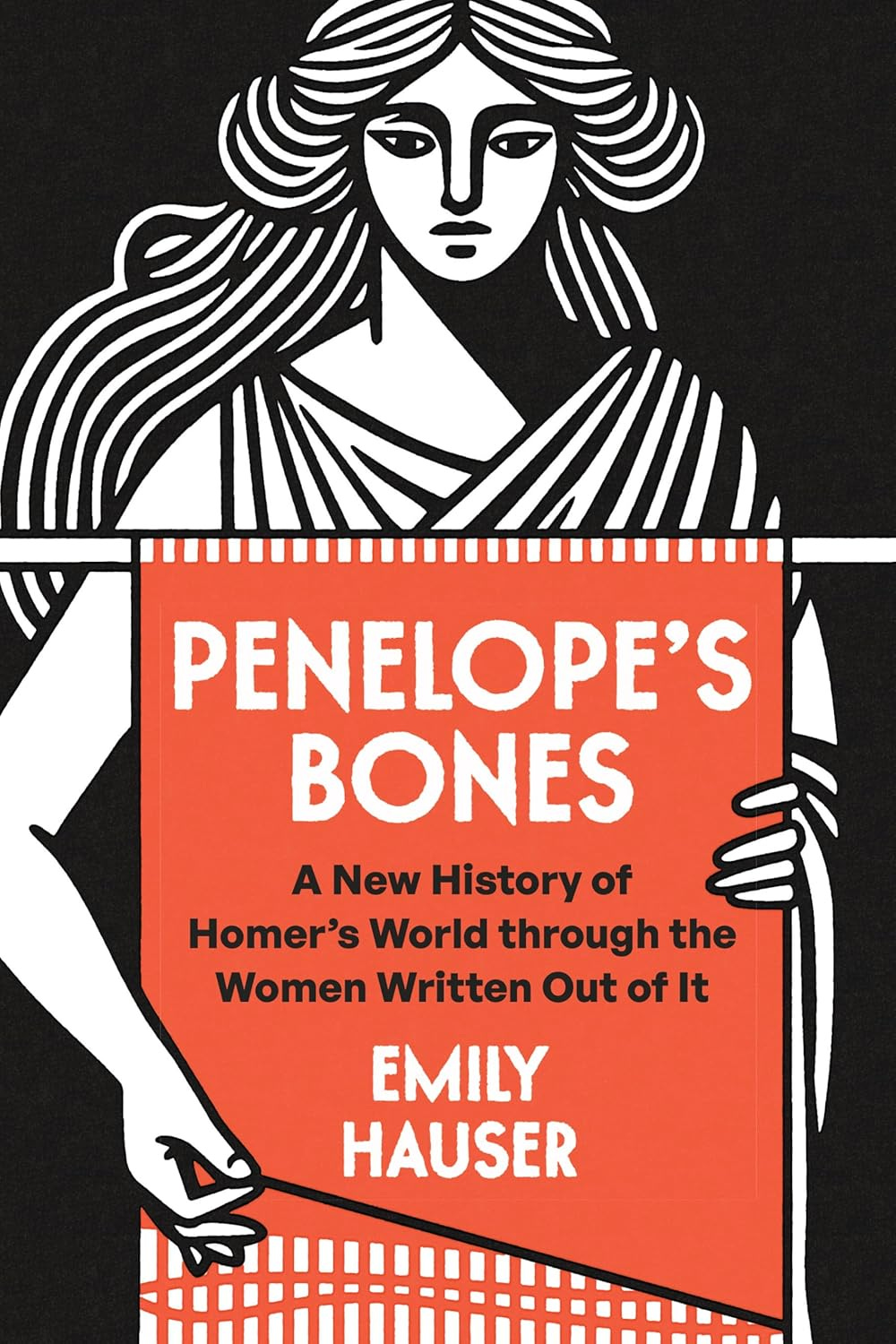"So, Muse: tell me about a woman."
With this inversion of Homer's famous invocation, Dr. Emily Hauser sets the tone for Mythica (published as Penelope's Bones in the USA), a work that dares to center women not as literary devices or symbolic placeholders but as historical agents whose lives shaped and were shaped by the world behind Homer's epics. Hauser's aim is not to embellish or fictionalize; instead, she anchors her inquiry in hard evidence, pulling from archaeology, ancient DNA analysis, and literary criticism to recover the lived realities of women in the Late Bronze Age. This is not mythologizing; this is historical reconstitution.

For readers who assume this is another fictional reimagining of the Homeric world, it is not. Mythica is nonfiction, through and through. Its narrative is guided not by invention but by inquiry, and its revelations come from imaginative flourish and painstaking research. It is quite deliberately a reckoning with Homer, history, and the stories we have too long told at women's expense.
Hauser argues that women are indispensable, not peripheral, to the Iliad and Odyssey. Helen, Briseis, Hecuba, and Penelope are not background figures. They are narrative catalysts, cultural symbols, and historical enigmas worth serious scholarly attention. The book turns traditional Homeric interpretation on its head: instead of using the epics to illuminate the past, Hauser uses what we know of the past, from skeletal remains to palace tablets, to interrogate Homer. She challenges the long-standing literary and historical practice of relegating women to the margins of myth and memory.
The scope of the book is impressively wide-ranging. Hauser moves fluidly between discussions of Bronze Age political structures and the mechanics of international trade, from the intricacies of Linear B tablets to the spiritual roles of goddesses like Thetis and Athena. She draws from Mycenaean grave goods, Hittite diplomatic letters, shipwrecks, and isotopic bone data to reconstruct ancient women's material and social lives. Themes of war, slavery, kinship, inheritance, and cultural exchange are threaded through each chapter, with mythic figures serving as gateways into broader historical realities. Framed around individual women from Homer's epics, the book's organization grounds this interdisciplinary sweep in human stories, giving the reader a point of emotional and intellectual entry into each new domain of inquiry.

One of the book's most sobering and original contributions lies in its discussion of malnutrition among women in the Bronze Age Aegean, a subject Hauser handles with rigor and empathy. She presents a picture of widespread, systemic nutritional inequality by drawing on skeletal analysis, isotopic data, and administrative records from Linear B tablets. Women, particularly those enslaved or of lower status, were consistently underfed relative to men. This disparity left visible traces on their bones and teeth, from enamel hypoplasia to pelvic deformation. The consequences were harrowing: a narrowed pelvic structure, the result of childhood malnourishment, drastically increased the risk of death in childbirth. This biological fragility, coupled with social expectations of repeated pregnancies, created a deadly feedback loop. Hauser presents this as a parallel to the glorified deaths of men in battle, except here, the battlefield is the domestic sphere, and the death toll is quiet, private, and largely erased. It's one of the book's most potent arguments: that silence, too, is a form of historical violence.
Throughout, Hauser resists the temptation to romanticize the past. Her feminist lens is clear, but so is her historical discipline. She acknowledges where the evidence is fragmentary, where interpretations must remain speculative. Still, the interdisciplinary breadth of her research—combining archaeological data, literary analysis, and cutting-edge genetics, grounds her narrative in substance rather than sentiment. The result is a book that asks urgent questions about how we read ancient texts and the priorities and prejudices of the cultures that have shaped their interpretation.
At a time when the politics of storytelling are under intense scrutiny, Mythica offers both a challenge to inherited narratives and a blueprint for reimagining them. Hauser doesn't simply retell old tales; she interrogates the conditions that shaped them and the ideologies that preserved them. Mythica doesn't just reframe the Homeric world; it reclaims it.
This review is of an advance reader copy provided by NetGalley and University of Chicago Press.

This sounds like a fascinating book Jonathan, thank you for such a considered review. Even in recent times, women, and girls so often eat after the men have finished. The physiological impact on the growers, nurturers and birthers of future generations (who were also so often, and still, held responsible for girl children, when a boy is considered of higher value, miscarriages, and infertility) is so hard to read, and imagine the horror they experienced. Such an important history to finally record.
This is such a sensitive, eloquent and quietly powerful review, Jonathan, I do hope Emily Hauser gets to read it! Do let the publicist at Chicago UP know about it, if you haven't already done so. Very shocking to read about how Bronze Age malnutrition affected women.